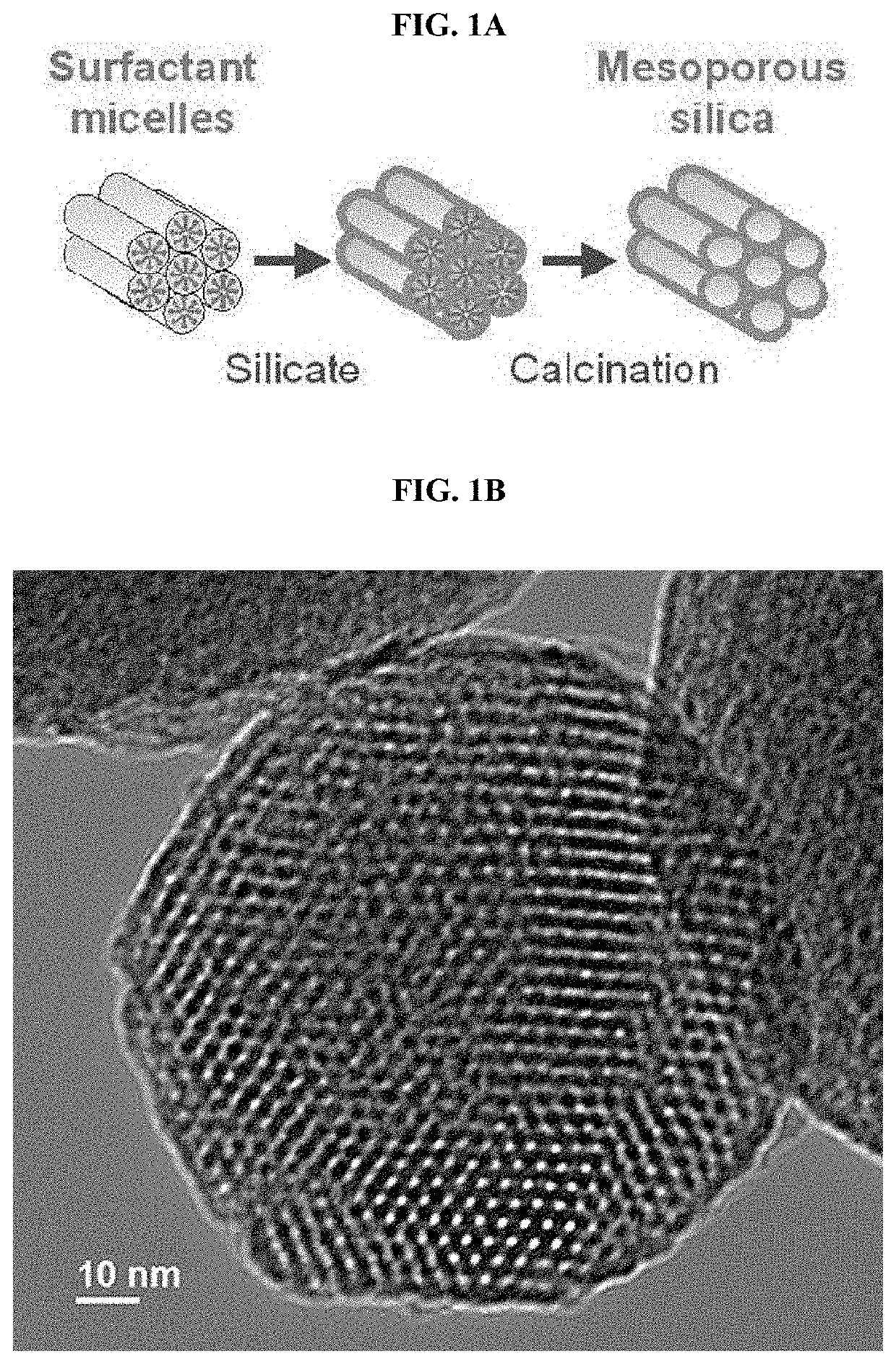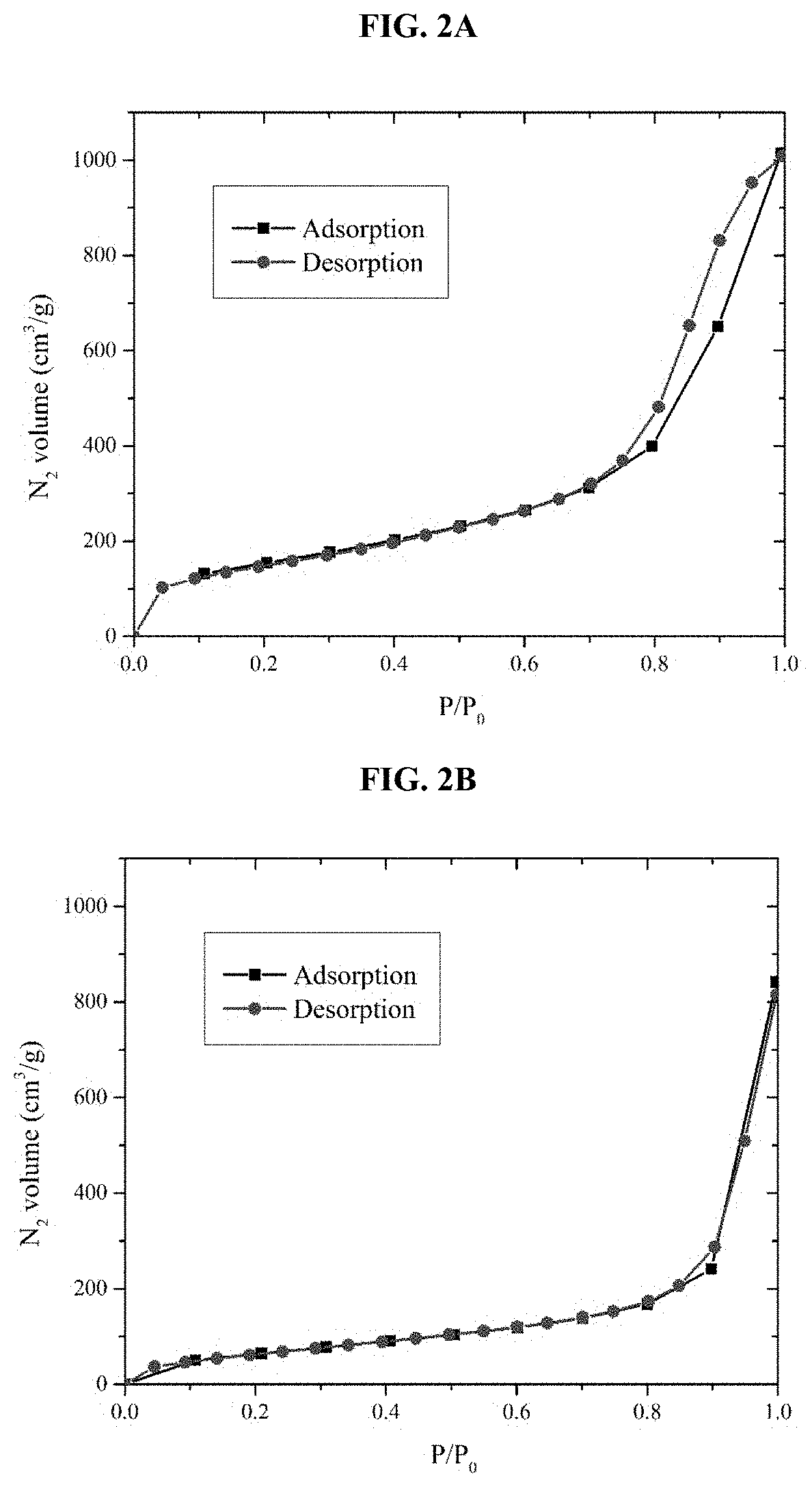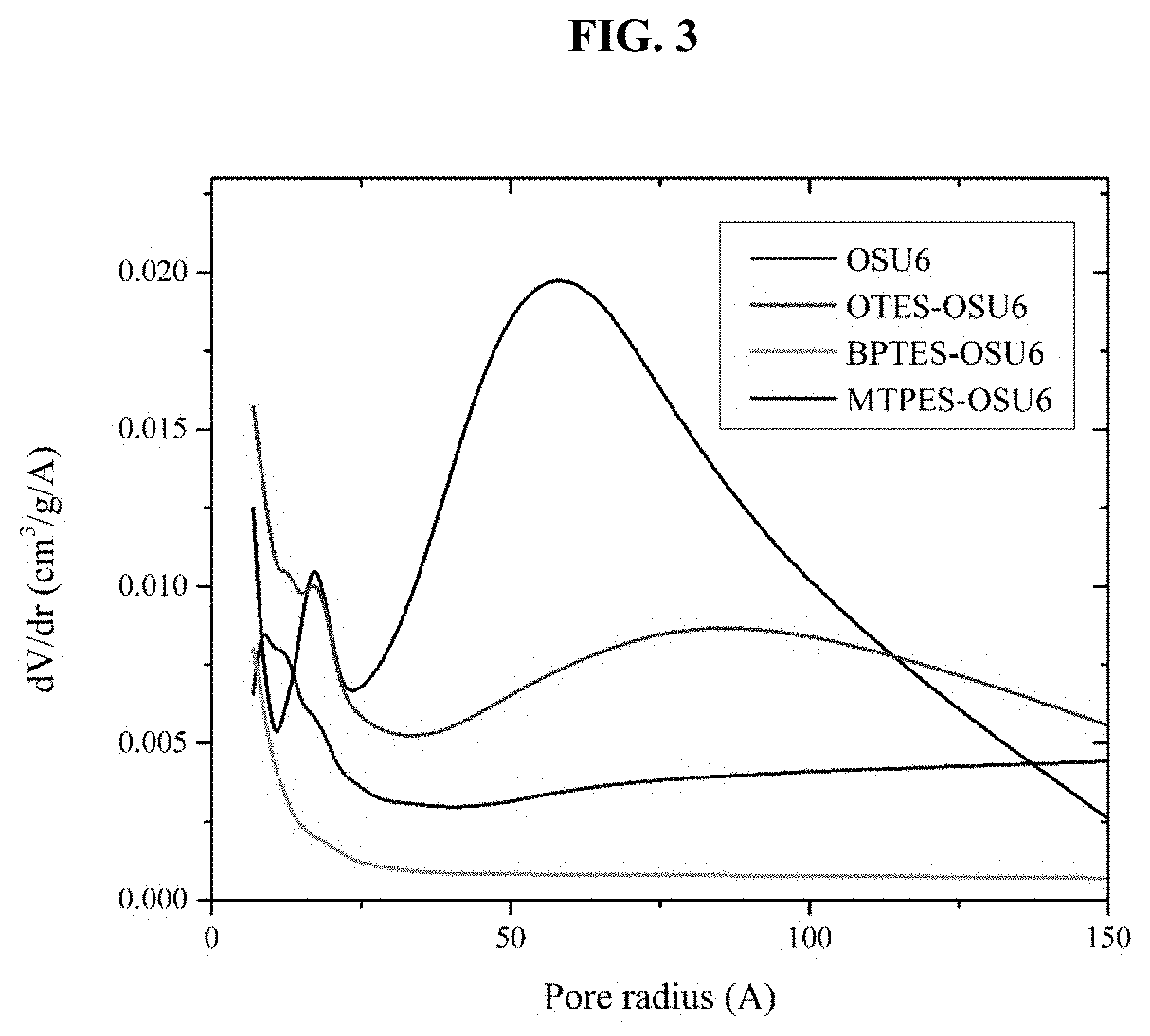Sorbent and Devices for Capturing, Stabilizing and Recovering Volatile and Semi-volatile Compounds
a technology of sorbents, which is applied in the field of systems, apparatuses, and methods used to capture, stabilize, and recover volatile and semi-volatile compounds, can solve the problems of difficult monitoring, disadvantageous requirement of porous polymers along with nanostructured materials, and inability to detect toxic compounds. to achieve the effect of facilitating subsequent quantitative recovery of captured compounds
- Summary
- Abstract
- Description
- Claims
- Application Information
AI Technical Summary
Benefits of technology
Problems solved by technology
Method used
Image
Examples
example 1
Preparation of Improved Non-Functionalized Mesoporous Silica MCM-41 type
[0176]The mesoporous silica of the invention was prepared according to a modified method of Apblett et al. (“Preparation of mesoporous silica with grafted chelating agents for uptake of metal ions” in Chemical Engineering Journal (2009), 155(3), 916-9240) or AlOthman et al. (“Synthesis and characterization of a hexagonal mesoporous silica with enhanced thermal and hydrothermal stabilities”, in Applied Surface Science (2010), 256, 3573-3580), the entire disclosures of which are hereby incorporated by reference.
[0177]A templating solution was prepared first by dissolving 284.0 g (1.08 mol) of 1-hexadecylamine (HDA) in 1040 mL of distilled water at room temperature, sonicating for 5-10 min to produce foamy and uniform paste. A second solution was prepared by mixing 524 g (2.4 moles) of tetraethylorthosilicate, 448 mL (0.96 moles) of ethanol and 96 mL (1.6 moles) of isopropanol in under magnetic stirring at room tem...
example 2
Preparation of Improved Functionalized Mesoporous Silica MCM-41 Type
[0178]Briefly, 10 g of OSU-6 powder was refluxed in 100 mL of dry toluene for four hours in dry atmosphere followed by washing with dry toluene and drying at 80° C. under vacuum. The resulting material was mixed in 100 mL of dry toluene with 20 mL of trimethylamine (TEA) and stirred for around an hour at room temperature. The obtained solid was filtered off with a fine filter funnel, washed with 50 mL of dry toluene three times, and vacuum-dried. During the first functionalization step, 3.0 g (˜50 mmol) of the TEA-reacted OSU-6 was refluxed with 50 mmol of a functionalizing agent in 100 mL of dry toluene for 48 hours under N2 atmosphere. The resulting solid mixture was filtered off with a fine filter funnel and washed three times, first with 50 mL of toluene and then with ethanol to remove any remaining functionalizing agent. The obtained white solid was dried at 80° C. under vacuum for 24 hours. The described proce...
example 3
Characterization of Properties of Mesoporous Silica
Pore Size and Pore Volume:
[0179]This is determined according to the procedure of Barrett-Joyner-Halenda (BJH) model (“The determination of pore volume and area distributions in porous substances. I. Computations from nitrogen isotherms” in J.A.C.S. (1951), 73, 373-380), the entire disclosure of which is hereby incorporated by reference. 20-point N2 adsorption and desorption Brunauer-Emmett-Teller (BET) isotherms were recorded for each powder. Exemplary nitrogen isotherms for the non-functionalized (FIG. 2A) and methoxytriethylenoxypropyl-functionalized (MP-functionalized) mesoporous silica (FIG. 2B) were obtained.
[0180]FIG. 2A contains type IV isotherms, which are associated with the capillary condensation of adsorbate into mesopores, while the observed hysteresis of type A indicates that pores of the mesoporous silica have cylindrical shapes. After functionalization (FIG. 2B), the hysteresis disappears, and the adsorption-desorptio...
PUM
| Property | Measurement | Unit |
|---|---|---|
| temperature | aaaaa | aaaaa |
| temperature | aaaaa | aaaaa |
| wt % | aaaaa | aaaaa |
Abstract
Description
Claims
Application Information
 Login to View More
Login to View More - R&D
- Intellectual Property
- Life Sciences
- Materials
- Tech Scout
- Unparalleled Data Quality
- Higher Quality Content
- 60% Fewer Hallucinations
Browse by: Latest US Patents, China's latest patents, Technical Efficacy Thesaurus, Application Domain, Technology Topic, Popular Technical Reports.
© 2025 PatSnap. All rights reserved.Legal|Privacy policy|Modern Slavery Act Transparency Statement|Sitemap|About US| Contact US: help@patsnap.com



